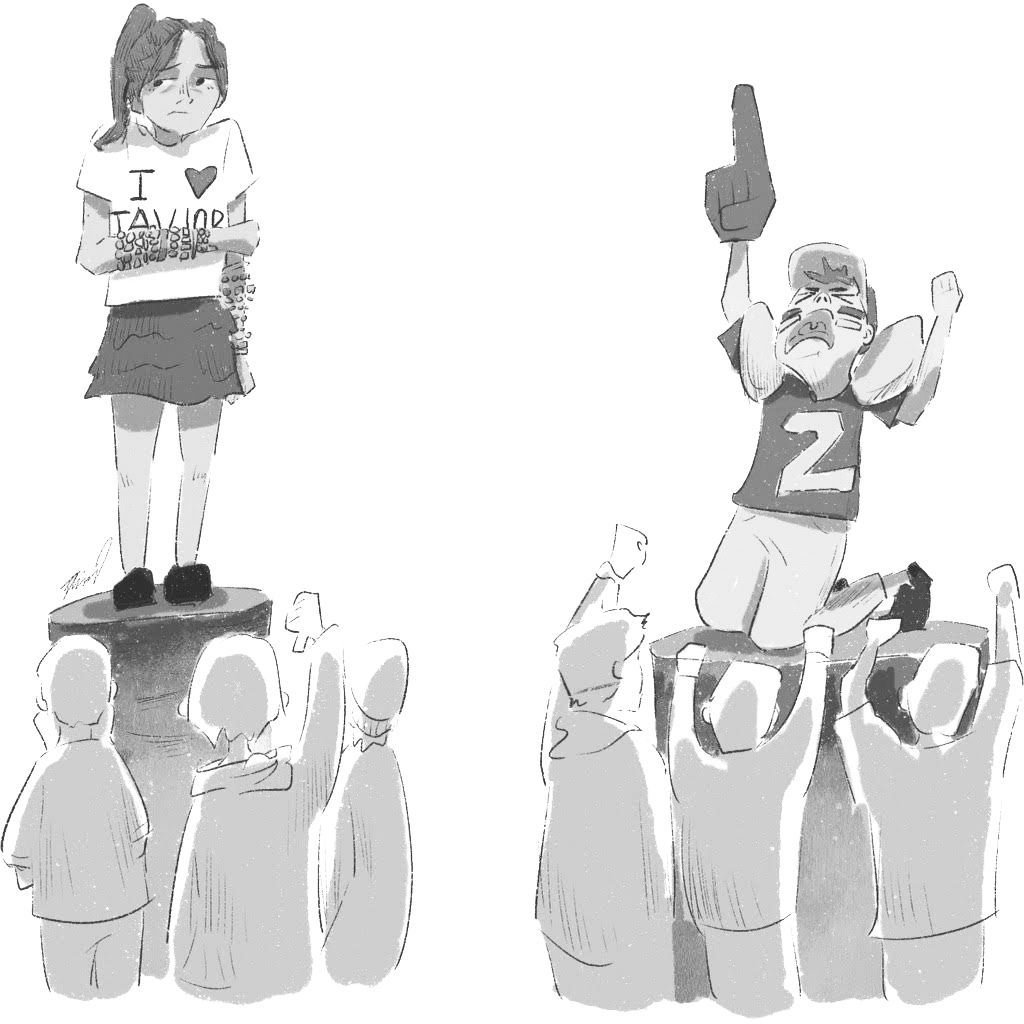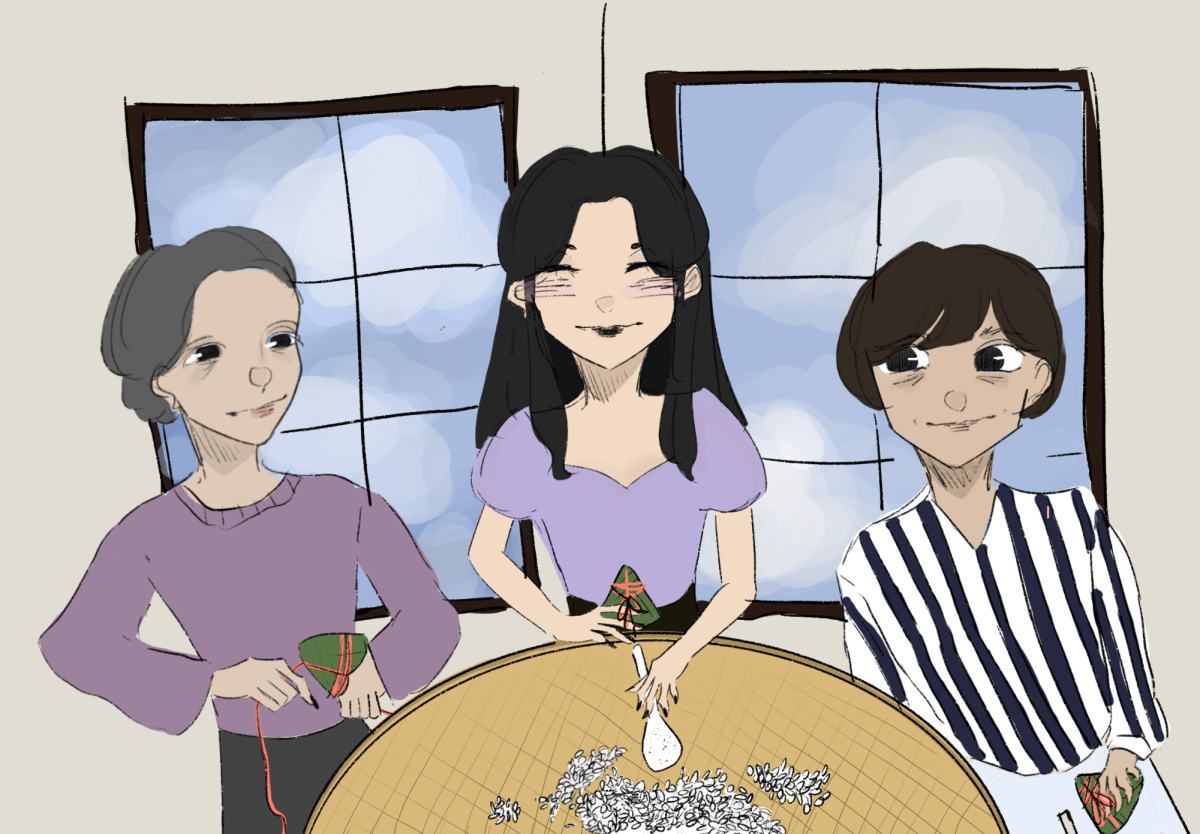The class begins to filter in. One by one, Art History students come through the door and into a classroom filled with paintings, sculptures and art projects lined up on the desks. Rudy Khanwhale (11) says hi to a few friends sitting in their seats in the classroom, and eventually drags himself into the quiet hallway, lugging his voluminous AP Art History book with him. He reluctantly sits down with his fellow AP Art History (APAH) students—all four of them.
This year, both the standard and AP Art History classes were offered to students. However, only one teacher was qualified to teach both classes, so the two were combined into one class. Together, a total of 34 students were in the class at the beginning of the year; 19 APAH students and 15 Art History students. Yet, as the syllabuses were passed out and the material introduced, APAH students began to drop one by one—until only five students remained.
It’s an interesting phenomenon—why was it that when 34 Westview students were given a choice between an AP and a standard version of the same Art History class this year, only five of them chose to pursue the AP version?
Taught by the same teacher and in the same class period (APAH students in the hallway and Art History in the classroom), one would think the AP and standard Art History curriculum would be quite similar but, on the contrary, standard art history students study a wider variety of art pieces and are encouraged to emulate the techniques presented in the lessons through their own various art projects. From creating a prehistoric cave painting with construction paper and finger paint, to building their own miniature art museums, the standard Art History is far from easy. Don’t be fooled by the lack of an Honors or AP designation; Art History students still bear a heavy workload of projects, with several pages of notes taken daily, and extensive tests covering each of the pieces they learn.
On the other hand, for APAH the College Board selects 250 art pieces for students to memorize nearly every detail of: from the artist to the date to the specific techniques used in creating each piece. Through rigorous reading, note-taking and testing, the students must commit the art pieces they learn to memory, and know intricate details of each to prepare for the AP test. It’s a grueling process, but it’s not why so many students opted to take the standard version instead.
The APAH curriculum has recently changed; previously, APAH students studied much more than 250 pieces—some classes were taught up to 1,000—learning a much broader scope of art history and thus fostering a greater appreciation for the nuanced and complex subject that it is. However, last year College Board decided to diminish this experience by limiting the art pieces in the curriculum down to the 250 pieces they chose.
This change was a major factor in many students’ decision to take the standard Art History class. For the history of human life and expression, 250 pieces just doesn’t seem to cut it.
Shivali Yedulapuram (11) was one student who had a hard time deciding between whether to take Art History or APAH. Having already taken six APs in high school so far, she was heavily leaning towards APAH to boost her GPA. But, something kept pulling her back toward standard Art History; she couldn’t shake the feeling that something was missing in APAH’s curriculum.
“I felt like either way I was learning about art history and techniques, but with Art History we could go much more in depth,” she said, “I finally decided to take the regular Art History class so I could actually learn about the art instead of just memorizing facts.”
Many other students made the same decision as Yedulapuram, letting their passion for art guide them rather than the grade boost APAH could provide. The fact that 29 students opted out of APAH this year make a clear statement about its appeal to today’s students. Because many students were won over by a more comprehensive and personalized version of the class, it’s shown that their hunger for knowledge and passion overpowers any pressure from parents and peers to sacrifice learning for a GPA boost.
To me, the instance of the minuscule APAH class is a manifestation of the AP curriculum’s lack of understanding towards the subject it preaches to have expertise on. Art isn’t the kind of subject you can coldly recite in factual terms; it’s, well, art! It deserves the respect and honor to be taught in its fullness, not limiting its rich history to a mere 250 pieces. So when students were given a choice between the two classes, they recognized this and acted accordingly.
Don’t misunderstand; those who took on APAH’s intense course load do deserve respect. After all, it is known to be one of the hardest AP classes at Westview. We all have different priorities; maybe those taking APAH just wanted a challenge, maybe art isn’t their passion. But I find solace in the fact that Art History won the hearts of the majority of the students. Even though the big shots at College Board might think it’s acceptable to condense art’s intricate history, students will not stand for that. And most importantly, I find solace that even in the face of immense pressure to take as many AP’s as humanly possible, students still choose passion over pressure.





